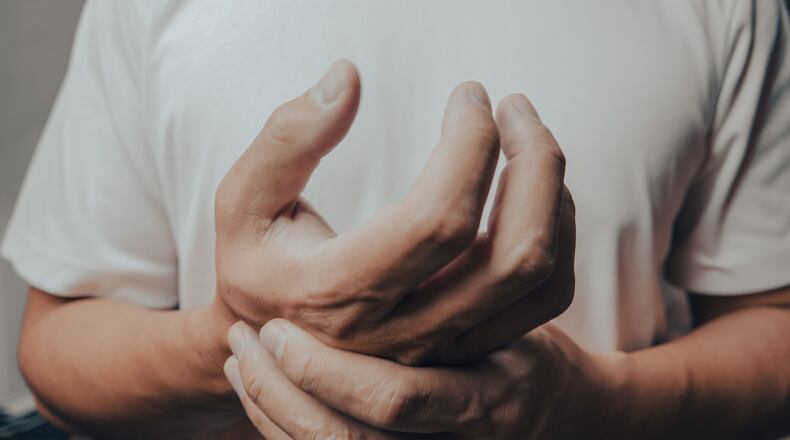Since PD affects the nervous system, various parts of the body controlled by nerves can be impacted by the disease. Symptoms often start slowly and may be virtually undetectable to the average person. The Mayo Clinic says the first symptoms may be a barely noticeable tremor in just one hand. Stiffness or slowing of movement also can be an early marker of the disease. Some people with PD may begin to have expressionless faces and speech may become soft or slurred. Symptoms worsen as the condition progresses.
The National Institute of Neurological Disorders and Stroke identify these four primary symptoms of PD, though it should be noted that everyone experiences symptoms differently.
- Tremor: Shaking often begins in a hand, although a foot or the jaw may be first affected. One tremor characteristic of PD is a rhythmic back-and-forth motion that may involve the thumb and forefinger and appear as Òpill rolling.Ó It is most obvious when the hand is at rest.
- Rigidity: Muscle stiffness and resistance to movement affects many people with PD. The muscles remain constantly tense and contracted so that a person aches or feels stiff. This rigidity can become obvious when another person tries to move the individualÕs arm, which will only move in short, jerky movements known as Òcogwheel.Ó
- Bradykinesia: This is a slowing down of spontaneous and automatic movement. Activities that were once easily performed now take much longer. There often is a decrease in facial expression, called Òmasked face.Ó A person with PD may not move his or her arms while walking.
- Postural instability: This impaired balance and change in posture can increase the risk of falls. Postural instability also may affect walking gait. Someone with PD may appear to be shuffling.
The cause of PD remains unknown. Scientists believe a combination of genetic and environmental factors are at the root of the disease. There is no cure for PD, although there are treatment options that may help alleviate some symptoms. Currently there is no treatment to slow the progression of PD.
The Mayo Clinic says changes occur in the brains of people with PD. Notably there is the presence of clumps of substances called Lewy bodies. These Lewy bodies often show a widespread protein called alpha-synuclein, which cells can’t break down. Researchers have found alpha-synuclein in the spinal fluid of people who later develop PD.
The Parkinson’s Foundation says people with PD take domaminergic medications to replace missing dopamine in the brain. This helps to treat various symptoms. Ongoing research into PD has led researchers to find ways to identify biomarkers for PD that can lead to earlier diagnoses and more tailored treatments.
Various conditions can produce symptoms similar to PD. It is best to discuss any concerns with a doctor. A consultation with a neurologist likely will be recommended. With the right treatment and support, someone with PD can still live a quality life for years after diagnosis.
About the Author

